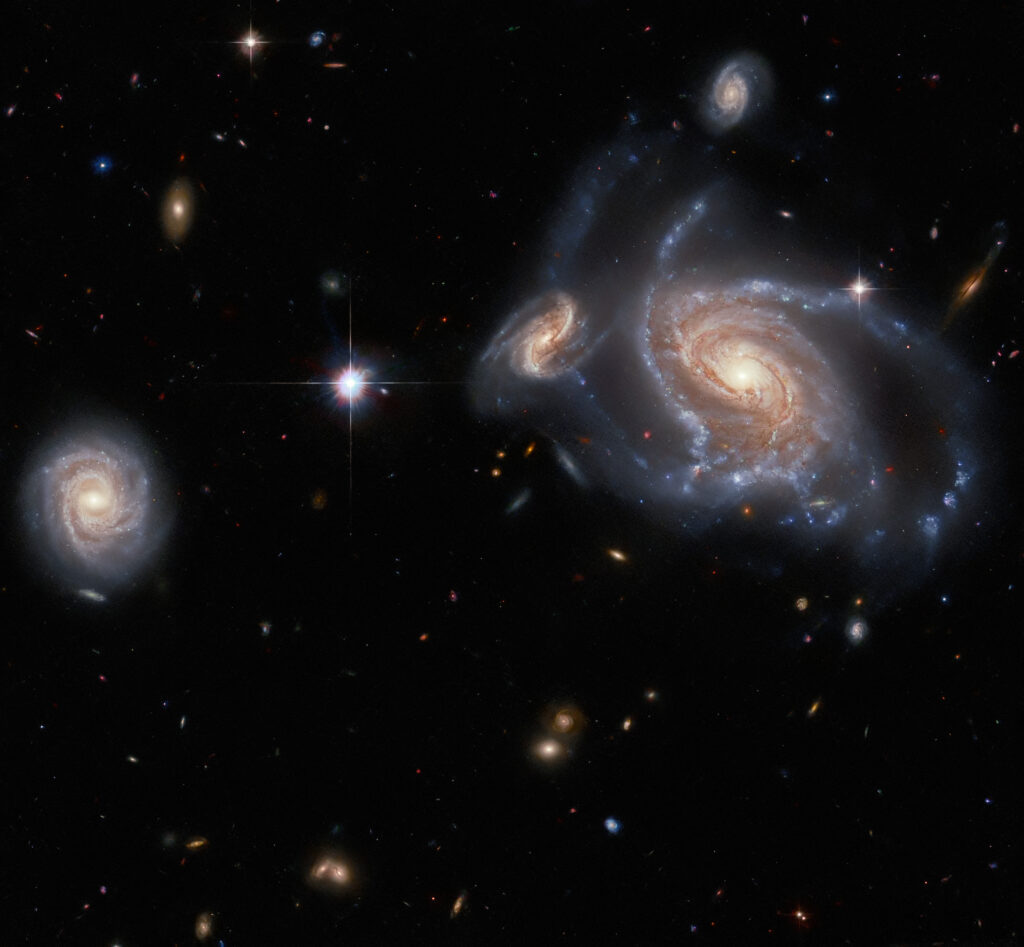Astronomers working with the Hubble telescope have published a curious image showing a whole collection of spiral galaxies. They seem to be neighbors, but in reality they are not.

The galaxy NGC 1356 is captured on the right side of the Hubble image. It is adjacent to two smaller galaxies LEDA 467699 (above it) and LEDA 95415 (very close to the left). And finally, in the left part of the frame, you can see another galaxy, known as IC 1947.
This image is an interesting example of how difficult it is to determine whether two galaxies are really next to each other or only seem so to an observer on Earth. A cursory glance at the Hubble image suggests that NGC 1356, LEDA 467699 and LEDA 95415 are close neighbors, while IC 1947 is located at a more remote distance. However, it should be remembered that two-dimensional images like this only give an idea of how objects are distributed in the sky. But they do not contain information about their distance from the Earth.
For example, although NGC 1356 and LEDA 95415 seem to be neighbors, in reality the first is about 550 million light-years from Earth and the second is about 840 million light-years away. So the distance between them is almost 300 million light years. This also means that LEDA 95415 is likely much smaller than NGC 1356 than it seems at first glance.
On the other hand, although NGC 1356 and IC 1947 appear to be separated by a cosmic abyss in this image, IC 1947 is only 500 million light-years from Earth. The angular distance between them in this image is less than four hundred thousand light-years, so they are actually much closer neighbors than NGC 1356 and LEDA 95415.
According to https://esahubble.org
Follow us on Twitter to get the most interesting space news in time
https://twitter.com/ust_magazine


